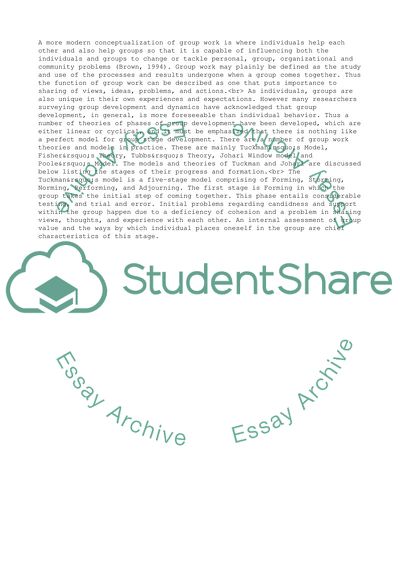Cite this document
(Group Work Theories and Practices Term Paper Example | Topics and Well Written Essays - 1750 words, n.d.)
Group Work Theories and Practices Term Paper Example | Topics and Well Written Essays - 1750 words. Retrieved from https://studentshare.org/management/1561849-critically-discuss-the-relative-benefits-and-challenges-of-using-group-work-as-opposed-to-11-work-in-social-work-practice
Group Work Theories and Practices Term Paper Example | Topics and Well Written Essays - 1750 words. Retrieved from https://studentshare.org/management/1561849-critically-discuss-the-relative-benefits-and-challenges-of-using-group-work-as-opposed-to-11-work-in-social-work-practice
(Group Work Theories and Practices Term Paper Example | Topics and Well Written Essays - 1750 Words)
Group Work Theories and Practices Term Paper Example | Topics and Well Written Essays - 1750 Words. https://studentshare.org/management/1561849-critically-discuss-the-relative-benefits-and-challenges-of-using-group-work-as-opposed-to-11-work-in-social-work-practice.
Group Work Theories and Practices Term Paper Example | Topics and Well Written Essays - 1750 Words. https://studentshare.org/management/1561849-critically-discuss-the-relative-benefits-and-challenges-of-using-group-work-as-opposed-to-11-work-in-social-work-practice.
“Group Work Theories and Practices Term Paper Example | Topics and Well Written Essays - 1750 Words”, n.d. https://studentshare.org/management/1561849-critically-discuss-the-relative-benefits-and-challenges-of-using-group-work-as-opposed-to-11-work-in-social-work-practice.


